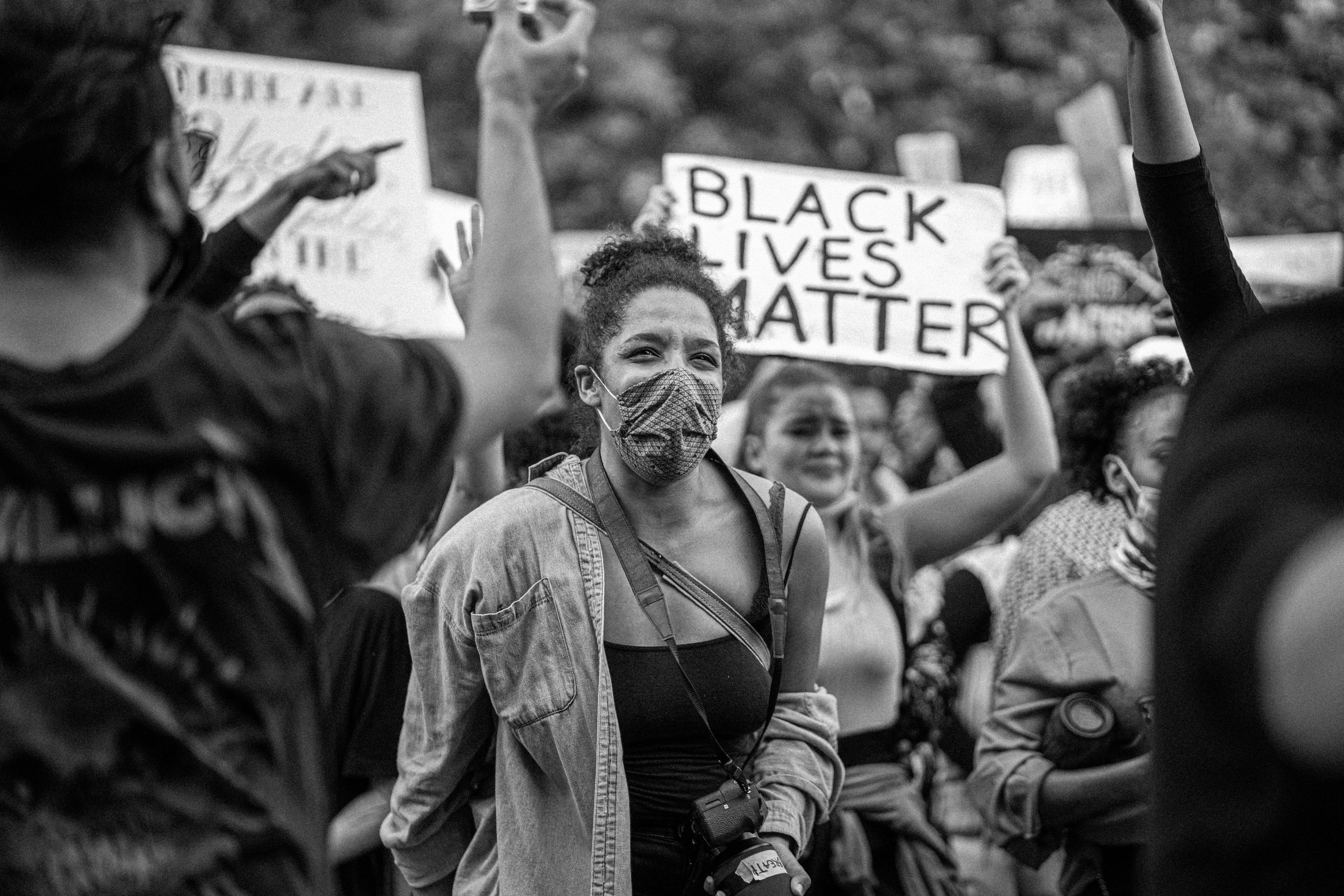PhotoCredit: Mido Makasardi ©️.
The day after George Floyd’s murder, the neighborhood residents around S. Carrollton Ave. in New Orleans began their daily nine-minute silent protest, as silent as a protest can be with the St. Charles streetcar rumbling down the tracks on either side of the street. Every summer and fall evening at six o’clock, as I would leave Audubon Park after my walk, I drive down the street with protesters on both sides, signs and fists raised in the sky. As I drove down the street in mid-October, it occured to me that it has been five months since this protest started…five months since George Floyd was murdered. The protest seems to be frozen in time, individuals still in their summer clothes, wearing sunglasses and hats and masked up. It is sometimes difficult to gauge the passage of time in New Orleans, where the weather change is not an obvious give-away as it is in places like New York City and Chicago.
A few days after George Floyd’s murder, I observed employees of Bevolo Lights in the French Quarter, a family-owned lights business that has been supplying city lights for decades, board up the shop windows with plywood.
“Why are you all boarding up the shop? Pandemic, the storm or the protests?” I asked one of the employees.
“All of it,” he replied. “Pandemic, storm and protests. All of it. Yes, ma’am.”
We continued on our separate, opposite ways, each carrying with us our own feelings of uncertainty around the pandemic, storm and protests.
There are moments, even prior to the few protests that would eventually take place in the city, when I am walking in the French Quarter, and I can swear to anyone in the same space as myself that the smell of teargas lingers in the air. I can never confirm this, however, with anyone around me, as I am never in the vicinity of someone who has experienced the smell of chemicals dispersed into crowds. Smells trigger memories by moving through the amygdala and hippocampus, connecting a scent with an emotion and memory. In the case of teargas, I associate the smell with the memory of walking home from my university taxi stop in the city of Ramallah, where I more often than not have to change routes because the Israeli Defense Forces (IDF) blocked the street and fired a few teargas canisters in a crowd of children. Logically, as I walk amongst French architecture, I realize I am in no immediate danger, and I am, in fact, thousands of miles away from teargas and conflict. However, like most individuals with access to social media, I spent late spring and summer consuming news that perpetuated feelings of stress and fear. In some cases, I was staring at death, second-hand through a tiny screen. The headlines kept rolling throughout the early weeks of summer about the use of teargas by police departments in the United States in the wake of the protests. It seemed that every day, I was receiving emails with eithers op-eds urging city mayors to reject the use of such crowd control methods or scientific articles explaining the harm induced by such chemicals, and thus, urging leaders to condemn its use.
These chemicals are banned in times of war! Many op-eds and scientific articles made a point to mention this.
A lived experience noted otherwise. In June 2015, a few colleagues of mine and I were granted permission by the state of Israel to intern at Al-Makkased Hospital as a requirement for our undergraduate studies. My colleagues and I spent a month going back and forth from bus to taxi and on foot through Israeli checkpoints. I recall one instance while interning when the IDF hastily showed up to the hospital to detain a patient. I think that this memory is what provides me with the ability to contain any shock when an American colleague shows me a video from that same hospital circulating across social media in August. In the video, teargas canisters are being shot inside of the hospital building that contains patients, their visitors, and their healthcare providers. A cloud of smoke results, individuals covering their faces are captured in the video and muffled shouts are heard.
Again, the lived experience noted otherwise.
The employee’s comment – All of it – reinforced the intersection of COVID19, climate change and racism that is clear-cut in the city of New Orleans. Forced isolation, quarantine and businesses shuttering; dramatic, forceful weather events; and police violence stemming from the United States four-hundred-year history of racism and inequities leading to nation-wide protests were in all of our faces. Conversations around the pandemic, climate events and protests denouncing racism and violence are conversations about breathing. These conversations about breathing inevitably lead to conversations about social justice. The irony is not lost on me how all of it impacts the lungs and the ability to breath, a basic function that indicates an organism is living, yet all of it – the pandemic, the climate events, the violence – have cast a light on the unlivable, even deadly, situations. An epitome of cruelty during this global reckoning with the pandemic, racism, and capitalism, for example, is the use of teargas despite this reckoning.
A few days later after the plywood went up, I woke up to find the plywood removed from the doors, windows and other points-of-entry of Bevolo Lights. The COVID19 cases were the lowest reported since the start of the pandemic, a few storms were projected to fall over the city, and protests in New Orleans had subsided, except for the nine-minute ones along S. Carrollton Ave. However, all of it – the pandemic, the storms, the protests – is still very much present, demanding change. We can’t escape this.

